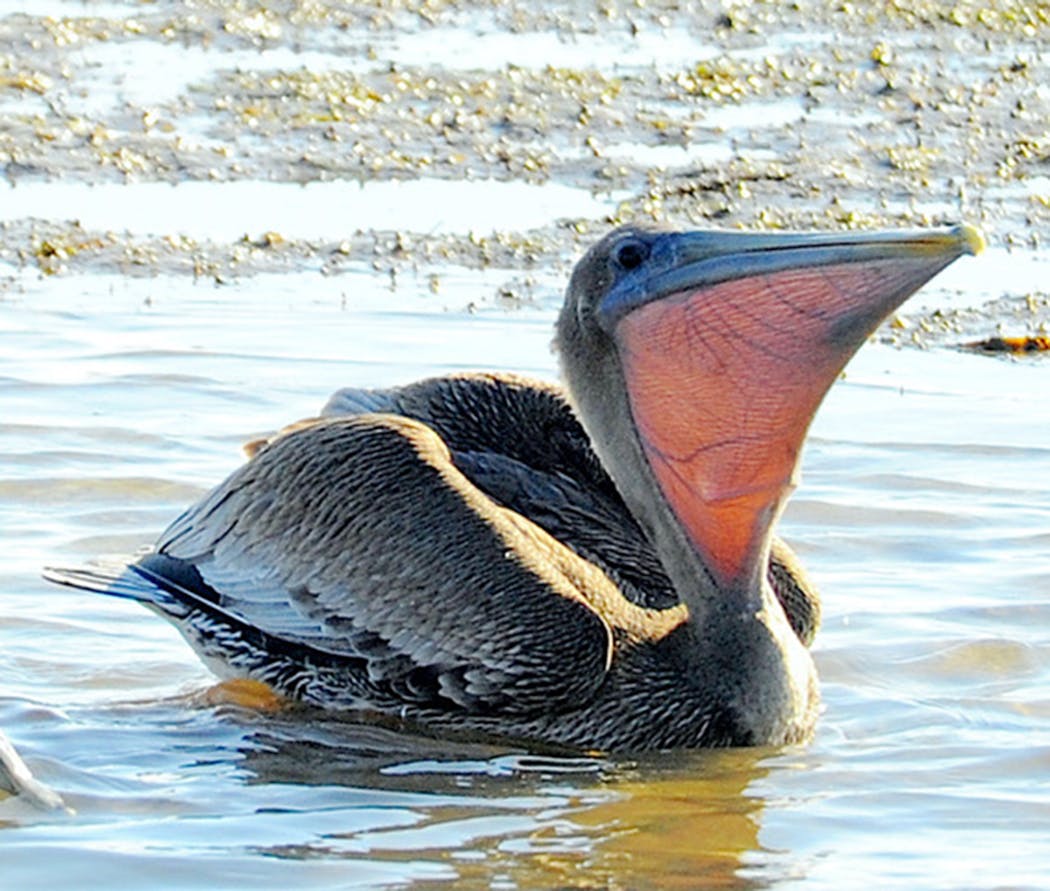Perhaps you've read the Ogden Nash limerick about "that wonderful bird the pelican" whose "bill can hold more than his belican."
The American white pelican, a species that nests in Minnesota, has a pouch forming the lower portion of the bill. Called the gular pouch, it can stretch down to hold, indeed, three times more than the bird's stomach.
North American pelicans — white or brown, two of eight extant world pelican species — are among birds with bills of that particular utilitarian shape. Gannets, frigatebirds and anhingas also have this, well, utensil or tool.
All of these birds are eaters of fish, by the way, most often rough fish of little or no economic value.
Gannets plunge-dive for food, as do brown pelicans, both birds of our coasts. Frigatebirds snatch prey from the water while in flight. Anhingas hunt underwater, using a "lightning-fast thrust of long, pointed bill," according to an Audubon web page.
American white pelicans simply use their pouch to scoop up fish. I've only seen a pelican with an extended pouch once, a lucky day.
The birds scoop, drain, raise their bill above horizontal to swallow. The pouch is not used to carry food. If the catch is for chicks, the adults regurgitate onto the ground for the young birds. Older chicks will reach down the adult's throat to find food.
Pelicans lay two eggs two days apart. One chick then is smaller, usually bullied by its sibling, denied food, often destined to die.
Pelicans will fish solitarily or in a group. In the latter the birds cooperatively form a line in an area known to have fish, the ends of the line slowly closing to form a trap.
Birds in the front of the line have first dibs on the fish. They could be dipping every six to 10 seconds. Birds in the middle feed more slowly because they are seeing fewer fish. The orderly line formed for herding will break into every-bird-for-itself.
Pelicans are colonial nesters, most often choosing nest sites that discourage predators. Islands are favorite places. They will share nesting ground with double-crested cormorants and sometimes gulls.
In Minnesota, American white pelicans have known nesting colonies at Marsh Lake near Ortonville and Appleton (mrbdc.mnsu.edu/minnesota-river-virtual-tour-marsh-lake), Lake of the Woods, Leech Lake, Pelican Lake in Wright County, and Minnesota Lake in Faribault County.
By 1878 the species had been extirpated from the state. Conservation efforts under guidance from the Minnesota DNR's nongame wildlife program were significant in habitat restoration and protection.
The species is under no imminent population threat today. Climate eventually will change habitat currently used.
The birds are highly sensitive to disturbance, easily driven from nests by close approach by people on foot or in a boat. A distance of 100 yards should be minimum.
Pouches aren't just for birds that catch fish. Blue jays are one of several species of birds gifted with a smaller pouch, also called gular. This sac, which opens beneath the bird's tongue, reaches down into the throat and upper esophagus.
The pouch allows the birds to carry several food items at once. You've perhaps watched a jay collecting pieces of corn or peanuts, wondering where in the world the bird is putting it all.
Find more pelican info at mnbirdatlas.org/species/american-white-pelican/
Lifelong birder Jim Williams can be reached at woodduck38@gmail.com.
Complex stories of migration are among the finalists for the Women's Prize for Fiction
Olympian Kristi Yamaguchi is 'tickled pink' to inspire a Barbie doll

After 4 decades in music and major vocal surgery, Jon Bon Jovi is optimistic and still rocking
Rom-com author Emily Henry knows the secret to having a healthy relationship with love





